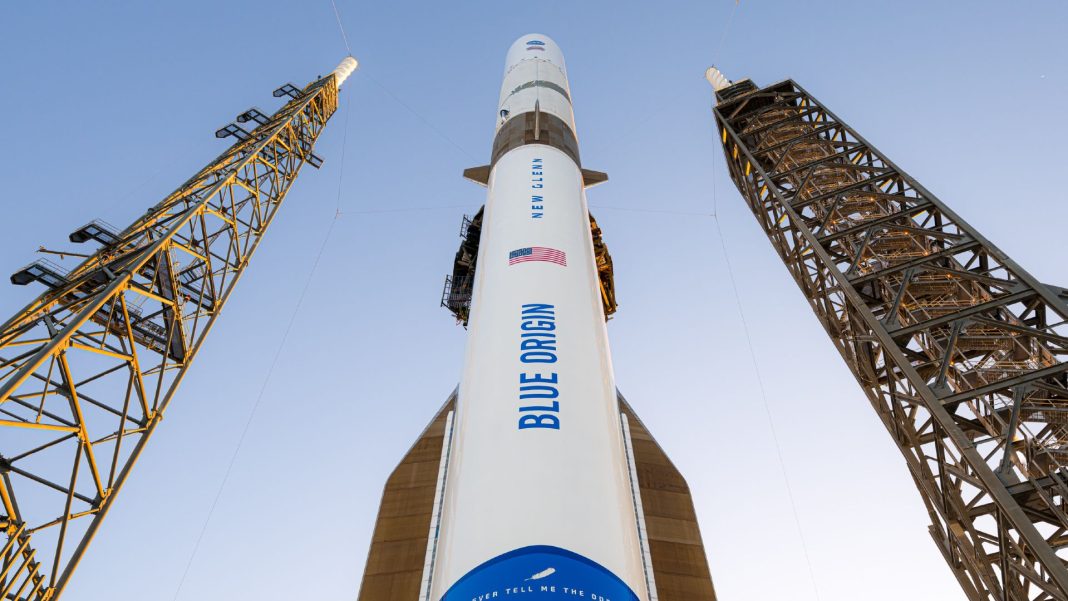There’s a special kind of anticipation that only space launches can evoke. The countdown, the rumble, the sheer audacity of sending something beyond our atmosphere. But sometimes, that anticipation gets an extra dash of suspense, especially when the weather decides to throw a wrench in the plans. Yet, after a brief, nail-biting weather hold, the moment we’ve been waiting for has finally arrived: Blue Origin’s mighty New Glenn rocket is set to launch NASA’s ESCAPADE mission, destined for the Red Planet.
New Glenn Ascendant: A Giant Takes Flight
For years, the space community has watched Blue Origin with keen interest, awaiting the debut of their heavy-lift champion, New Glenn. This isn’t just another rocket; it’s a testament to long-term vision and engineering ambition, bringing a powerful new player into the arena of orbital spaceflight. With its towering stature and impressive payload capacity, New Glenn is designed to be a workhorse, capable of everything from deploying constellations of satellites to carrying deep-space probes. Its reusability, a cornerstone of Blue Origin’s philosophy, promises to revolutionize access to space, making it more sustainable and, eventually, more affordable.
This particular launch, however, carries a weight far beyond mere commercial success. It marks New Glenn’s inaugural mission for NASA, a significant vote of confidence in Blue Origin’s capabilities. Sending a critical science mission to Mars as its first major assignment is a bold statement, signaling that New Glenn isn’t just ready for prime time; it’s ready for interstellar stardom. The commercial space race is heating up, and New Glenn’s entry is a seismic event, promising to accelerate humanity’s reach beyond Earth.
ESCAPADE: Unlocking Mars’ Atmospheric Secrets
While the launch vehicle itself is a spectacle, the payload it carries is equally, if not more, fascinating. NASA’s ESCAPADE (Escape and Plasma Acceleration and Dynamics Explorers) mission is an innovative dual-spacecraft endeavor designed to delve into one of Mars’ most enduring mysteries: how it lost its once-thick atmosphere and vast oceans. Think of it as a pair of intrepid detectives, flying in tandem, meticulously studying the Martian magnetosphere and its interaction with the relentless solar wind.
By using two identical spacecraft, ESCAPADE can take simultaneous measurements from different points in space, providing a comprehensive, 3D picture of Mars’ magnetic environment and atmospheric escape processes. This isn’t just academic curiosity; understanding how planets lose their atmospheres is crucial for grasping the conditions necessary for life elsewhere in the cosmos, and even for planning future human missions to Mars. As one veteran space observer, Dr. Anya Sharma, succinctly put it, “ESCAPADE isn’t just going to Mars; it’s going to the heart of what makes a planet habitable. This data will rewrite textbooks.” The insights gained from ESCAPADE could very well inform how we protect future Martian colonies or even whether we find signs of ancient life.
The Patience Game: A Small Delay for a Giant Leap
The universe, it seems, operates on its own schedule, and human endeavors must often adapt. Space launches, especially those involving such intricate technology and distant destinations, are incredibly sensitive to environmental conditions. A brief weather delay, while frustrating for those of us eagerly watching, is a small price to pay for ensuring the safety and success of a mission that will travel millions of miles. It underscores the immense precision and meticulous planning required in spaceflight, where every variable, from wind shear to upper atmospheric electrical conditions, is carefully considered.
Now, with the weather cleared and all systems green, the stage is set. Blue Origin’s New Glenn carrying NASA’s ESCAPADE isn’t just a rocket launch; it’s a confluence of ambition, science, and the relentless human drive to explore. It’s a moment that reminds us that despite the occasional hold-up, our journey to understand and reach beyond our home planet continues, bolder and more determined than ever.




